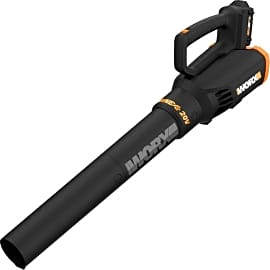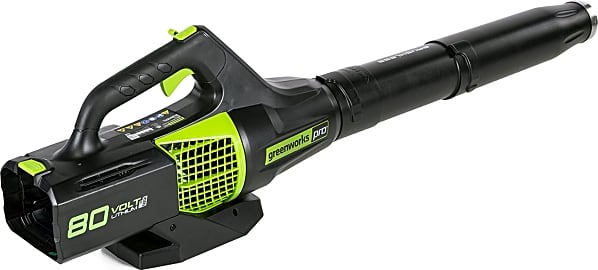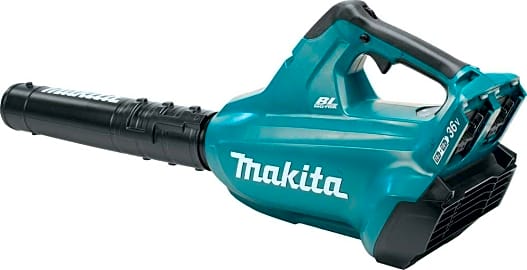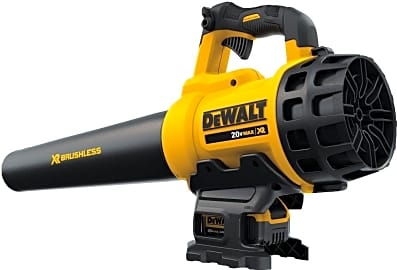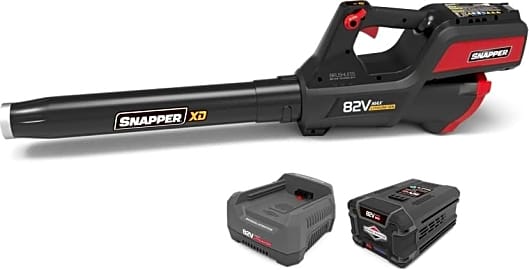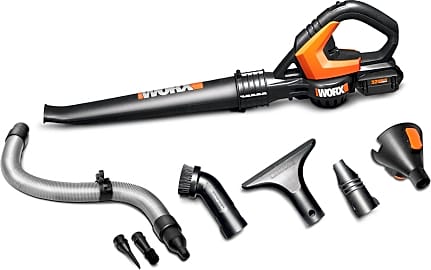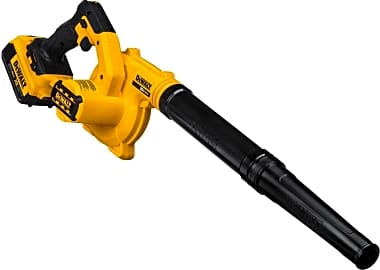The 10 Best Cordless Leaf Blowers

This wiki has been updated 27 times since it was first published in October of 2018. Raking is too tiring and slow, and unnecessary these days. If the arrival of fall brings with it a steady stream of red, yellow, brown, and pumpkin-colored dead leaves accumulating on your property, pick up a powerful blower. These convenient cordless models offer easy mobility and prevent your legs from getting tripped up by wires as you clear away debris in your yard or on your deck or patio. When users buy our independently chosen editorial picks, we may earn commissions to help fund the Wiki.
Editor's Notes
May 11, 2020:
If you are tired of digging that rake out of the shed and spending hours cleaning up the leaves in your yard, then switch over to one of these handy cordless blowers. They are significantly more convenient than corded models and much quieter than gas-powered models.
If this is your first foray into cordless units and are hoping to find something as strong as your old gas-powered model ... well, that's not going to happen. Cordless models just don't have that same kind of oomph. That being said, the Snapper XD, Greenworks BL80L2510, and Ego Power+ LB5804 are probably about as close as you are going to get. They can all move more than 500 cubic feet of air per minute at speeds ranging from 130 to 168 MPH. The Ego Power+ LB5804 also boasts an impressive 30 minutes of runtime at its highest setting, something few other cordless models can match.
If being lightweight and easy to handle is more important to you than power, you'll want to look at the Worx WG547, Worx WG545, DeWalt DCE100M1, and Black+Decker LSW221. These all weigh six pounds or less, with the WG545 and LSW221 coming in at less than four, so anybody should be able to use and easily control them without much fatigue. That being said, none of these will be very useful for handling wet matted leaves or clearing large areas, since they all have lackluster power and battery life, and are best suited for small areas of dry debris. The Worx WG545 does deserve special mention for the various attachments it comes with that make it very useful for a number of jobs around the house.
The Makita XBU02Z and DeWalt DCBL720P1 are both reliable options that come from well-respected companies in the industry. Talk to any contractor and they will probably tell you that either Makita or DeWalt makes their favorite power tools, so there is no reason to expect they won't continue to function reliably for years to come.
October 24, 2018:
Despite a few complaints that they lacked a certain level of power, added the Black+Decker LSW221, DeWalt DCE100B, and Milwaukee M18 due to their relative affordability and usefulness for light jobs. Although it is one of the most powerful options, kept the Snapper XD out of the top three after seeing reports that it’s rather heavy and unbalanced. Could not identify any major weaknesses in the Makita XBU02Z.
Special Honors
Stihl BGA 100 The BGA 100 is built with commercial landscapers in mind and features a boost mode that makes it the most powerful model in Stihl's lineup of cordless blowers. It has a variable speed throttle, a rear-mounted intake that makes it suitable for left- or right-handed use, and a low 56-decibel sound pressure rating. stihlusa.com
Cutting The Cord, Not The Power
Aside from eliminating the dependence on both a power cable and electrical outlet, cordless leaf blowers offer several additional advantages.
Depending on where you live, autumn can be a wonderful time of year. The blazing temperatures of summer are having their last hurrah, there's finally a nip in the air, and the foliage begins to change color. With the beauty of the fall season also comes a responsibility for cleaning up the mess that mother nature makes on your property (e.g. spreads of dead leaves falling on your front lawn or sidewalk). When performing yard maintenance, many things can be used to help you get the job done without breaking the bank. Anything from an electric lawn mower to a simple rake is fair game. But when it comes to clearing away piles of leaves, you'll need a dedicated, efficient, portable, and powerful solution in your arsenal of gardening tools to tackle the job quickly. Enter the cordless leaf blower.
A leaf blower is a yard tool designed to propel high volumes of air out of a nozzle for the purpose of moving debris (like grass clippings or dead foliage that has fallen off a tree). Unlike its AC-powered counterparts, the cordless leaf blower isn't limited to confined working spaces and, instead, uses a rechargeable battery to eliminate the inconvenience of a bulky power cable, while giving you the mobility needed to cover large areas. Many cordless leaf blowers deliver top wind speeds up to 150 miles per hour, which is more than enough to clear away dead leaves and messy grass clippings from a front or backyard. While leaf blowers can have electric or gasoline motors, most of the cordless options available are battery-operated with brushless motors.
Brushless motors don't generate the same level of friction or heat as their brushed predecessors. Because they lack internal brushes and commutators, brushless motors have minimal energy loss, less wear and tear, and less of a tendency to overheat, all of which allows them to run cooler, deliver more power to the blower, and maximize the tool's efficiency and battery life over time.
Aside from eliminating the dependence on both a power cable and electrical outlet, cordless leaf blowers offer several additional advantages. They are durable, lightweight, and ergonomically-designed, so they can be easily carried to any location. Secondly, their lack of internal combustion engines makes them much easier to maintain than their gas-powered cousins. Cleaning the blower tubes and recharging the batteries is about all that's required for maintaining most cordless leaf blowers. Next, their electric operation makes them environmentally-friendly power tools, as they don't produce or spew harmful greenhouse gases into the atmosphere. Finally, most cordless leaf blowers operate more quietly than their gas-powered competition. While I wouldn't recommend using a cordless (or any other type of) leaf blower to lull your neighbors to sleep, at the very least, the machine will reduce some degree of noise pollution during the daytime hours.
Balancing Ergonomics And Practicality
One of the most important considerations to make when purchasing a cordless leaf blower is the amount of power it delivers. Power is generally measured in both cubic feet per minute and miles per hour. Remember that CFM refers to the volume of air flowing out of a leaf blower's tube, while MPH is specific to the speed at which that air is propelled. Both values should be balanced accordingly to ensure efficient operation of the device.
A vacuum attachment will also come in handy when working around delicate flower beds, as the force of suction can pick up stray leaves without destroying other nearby plants.
Next, the cordless blower you choose should be relatively easy to handle, particularly when cleaning up debris from multiple areas around your property. Additionally, a variable speed trigger will give you plenty of control over the machine without causing operator fatigue.
Depending on the size of your property, consider a cordless leaf blower that can also work as a vacuum. This function is available on some models as a switch-activated operating mode that reverses the flow of air inside the tool's nozzle, allowing you to collect leaves and deposit them into some type of waste compartment or bag. Keep in mind, however, that vacuuming is ideal for cleanups of dry leaves, not wet ones. A vacuum attachment will also come in handy when working around delicate flower beds, as the force of suction can pick up stray leaves without destroying other nearby plants. But be aware that use of a vacuum attachment may require additional setup time, costs, and maintenance frequency.
A Brief History Of The Cordless Leaf Blower
While there is no definitive evidence proving who developed the first leaf blower, common belief is that the device originated from gas-powered backpack crop dusters in the late 1940s that were engineered to spray pesticides in plant nurseries. Upon realizing that they were powerful enough to move leaves and other debris, these devices were quickly adapted into leaf blowers by removing the pesticides.
Upon realizing that they were powerful enough to move leaves and other debris, these devices were quickly adapted into leaf blowers by removing the pesticides.
The H. L. Diehl Company (now known as the Scag Giant-Vac Company) claims to have developed one of the first walk-behind leaf blowers in 1959. Aldo Vandermolen later began exporting his own two-stroke backpack leaf blower by the 1960s.
Realizing that backpack sprayers were being modified for use as leaf blowers, the Kyoritsu Noki Company (later named Kioritz Corporation and then Echo Inc.) began marketing its first backpack blower in 1970, followed by a handheld leaf blower in 1978. Consumer popularity for leaf blowers exploded in the 1970s, especially in places like drought-stricken California where they could be used to quickly clean patios without wasting water.
The turn of the 21st century saw the introduction of both corded and cordless electric leaf blowers, the former of which addresses the air pollution concerns of its gas-powered counterparts, while the cordless variety provides a homeowner the freedom of mobility to cover any location around their property.


